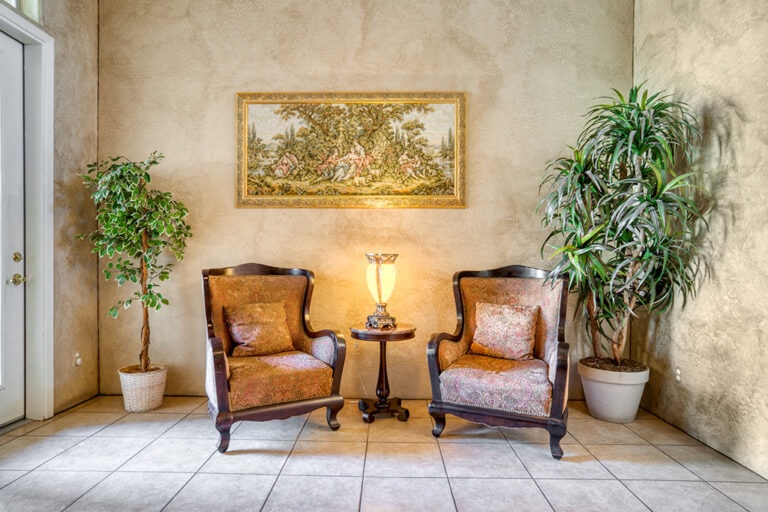
Decorative wall painting, once a niche art known only to professionals, is now a burgeoning trend in home decor. The artistic flair it adds to plain, mundane walls has made it a favorite project among home decor enthusiasts. More than just a splash of color, the techniques involved in decorative painting can transform a room, giving it character and depth. In this comprehensive guide, we will take you through everything you need to know to turn your walls into works of art.
Decorative wall painting is all about personal expression, so this guide is tailored for those who want to imbue their spaces with a sense of individuality. If you’re ready to roll up your sleeves and get creative, this guide is for you. Whether you’re a first-timer or looking to refine your skills, you’ll find tips, tricks, and inspiration that will help you master the art of painting your walls.
Choosing the Right Materials
The foundation of any successful painting project is the material you use. When it comes to decorative wall painting, the choice of paints and brushes is crucial.
Types of Paints for Decorative Wall Painting
There are several paint types suitable for decorative wall painting:
-
- Latex Paint: Water-based and versatile, latex paints are the most common choice for decorative painting due to their quick drying time and easy cleanup.
- Chalk Paint: Ideal for a distressed or shabby-chic look, chalk paint dries to a matte finish and can be sanded for a smooth or textured appearance.
- Acrylic Paint: Available in a wide range of colors, acrylic paints are known for their fast drying and are easily blendable.
- Tempera Paint: Often used for its opaque coverage, tempera is a great choice for creating solid and glossy finishes.
Each paint type has its benefits and is chosen based on the desired look and the skill level of the painter.
Selecting the Right Brushes
The right brush can make or break a decorative painting project. Here are some tips for selecting the right ones for your needs:
-
- Bristle Shape: For stenciling and fine lines, use flat or pointed brushes. Round brushes are versatile and great for blending.
- Bristle Type: Natural bristle brushes are best for oil-based paints, while synthetic bristles perform well with water-based paints.
- Size: The size of the brush should be proportional to the area you’re painting. Large walls are best tackled with larger brushes, while detail work requires smaller brushes.
- Handle: A comfortable handle is essential, especially for prolonged painting sessions. Consider a grip that suits your hand size and shape.
By selecting the right paints and brushes, you set the stage for a beautiful outcome.
Preparation and Planning
Meticulous preparation and thoughtful planning are the blueprints for a successful decorative wall painting project. Rushing through this stage can lead to frustration and disappointment later on.
Surface Preparation
A well-prepared surface is essential for the paint to adhere properly and for the finished product to look its best. Steps for surface preparation include:
-
- Cleaning: Walls should be free of dust, dirt, and grease. A diluted solution of trisodium phosphate (TSP) can help to degrease the wall.
- Repairing: Patch any holes or cracks with spackle or joint compound. Sand the area smooth once dry.
- Priming: A coat of primer is necessary for new drywall or over repairs. It helps to provide a consistent base for the decorative paint to adhere to and can also enhance the paint’s coverage.
Color Selection and Design Planning
The colors and design pattern you choose will set the mood for your room. Consider the following:
-
- Color Harmonies: Decide on a color scheme. Monochromatic, analogous, and complementary colors are popular choices for decorative painting.
- Design Elements: Will you use a full-wall stencil, create a mural, or opt for a more subtle effect? The design should complement the room’s purpose and other decor elements.
- Submitting to Samples: Always test your chosen colors and design on a small section of the wall. This will allow you to adjust before making a more significant commitment.
Proper planning ensures that you are happy with the final result and that the project runs smoothly.
Techniques and Styles
Decorative wall painting encompasses a variety of techniques that can create a multitude of styles. Here are some of the most popular techniques:
Stippling
Stippling involves applying paint to the wall with a stippling brush, creating a textured effect. It’s great for adding dimension and warmth to a room.
Sponging
With sponging, a sponge is used to apply paint in a random or patterned manner, creating a mottled look. It works well for casual or rustic styles.
Stenciling
Stenciling uses a pre-cut template to apply paint in a specific design. It’s an easy way to add intricate patterns without the free-hand precision required for pinstripes or murals.
Ragging
Ragging requires crumpled rags to be dipped in paint and then dabbed onto the wall, creating a soft, cloudy pattern.
Faux Finishes
Faux finishes replicate the appearance of other materials, such as marble, wood, or leather. These can be achieved with a combination of paint and glazes, and are best practiced on a sample board first.
Each technique offers a unique result and can be combined with others for an even more personalized effect.
Step-by-Step Guide
Whether you’re a beginner or an experienced painter, a step-by-step approach can help you achieve the best results.
Basic Decorative Painting Steps
For a basic decorative wall painting project, follow these steps:
-
- Preparing the Work Area: Clear the room of furniture and protect the floor with drop cloths.
- Taping: Use painter’s tape to protect areas you don’t want to paint or to create clean edges.
- Base Coat: Paint the wall with your base coat color and allow it to dry thoroughly.
- Technique Application: Apply your chosen decorative technique, working in small sections.
- Finishing: Remove the painter’s tape before the paint is fully dry, and touch up any imperfections.
Advanced Techniques
Advanced techniques, such as murals or intricate stenciling, may require more planning and precision. It’s important to take your time and potentially practice on smaller surfaces first.
Keeping It Clean
Clean your brushes and tools promptly when you’re done to prolong their life and ensure they’re ready for your next project.
By taking one step at a time and focusing on the details, you can achieve a professional-looking decorative wall painting in your home.
Troubleshooting Tips
No painting project is without its hiccups. Here are solutions to common issues you might encounter:
Uneven Coverage
If your paint is not covering the wall evenly, it might be due to insufficient primer, the paint being too thin, or the wrong type of brush. Address the underlying issue before proceeding.
Paint Bleeding Under the Tape
To prevent paint from bleeding under the tape, use a putty knife to press it firmly onto the wall. It’s also crucial to remove the tape when the paint is still slightly wet to prevent it from peeling.
Drying Too Quickly
In hot or dry conditions, paint might dry too quickly, leading to lap marks or an uneven finish. You can slow down the drying process by working in smaller sections, using more paint or a paint extender, or choosing to paint on cooler days.
By knowing how to address these common problems, you can ensure your painting project is as smooth as possible.
Inspiration and Trends
The world of decorative wall painting is vast and full of inspiration. Here are a few trends you might want to explore:
Ombre Walls
Ombre walls transition from one color to another, creating a calming and visually interesting effect.
Geometric Patterns
Using tape to create geometric patterns is a modern and playful twist on traditional wall painting.
Textured Strie
Textured strie is a technique that uses a stiff brush to create a striped or linear texture. It adds sophistication and can make a small room look taller.
By exploring these trends, you can stay current and personalize your space with a truly unique look.
How to Paint Decorative Walls
Decorative wall painting is a personal and rewarding project that can significantly enhance the aesthetic of your home. Whether you desire a simple yet elegant look or a complex, high-impact design, this guide equips you with the knowledge to take on the challenge.
We encourage you to tap into your creativity and use this guide as a stepping stone to explore the many possibilities of decorative wall painting. Remember, with each stroke, you’re not just adding paint to a wall — you’re adding a piece of your individuality to your home.
Free Painting Estimate
Do not fill this form out if you’re a solicitor.

